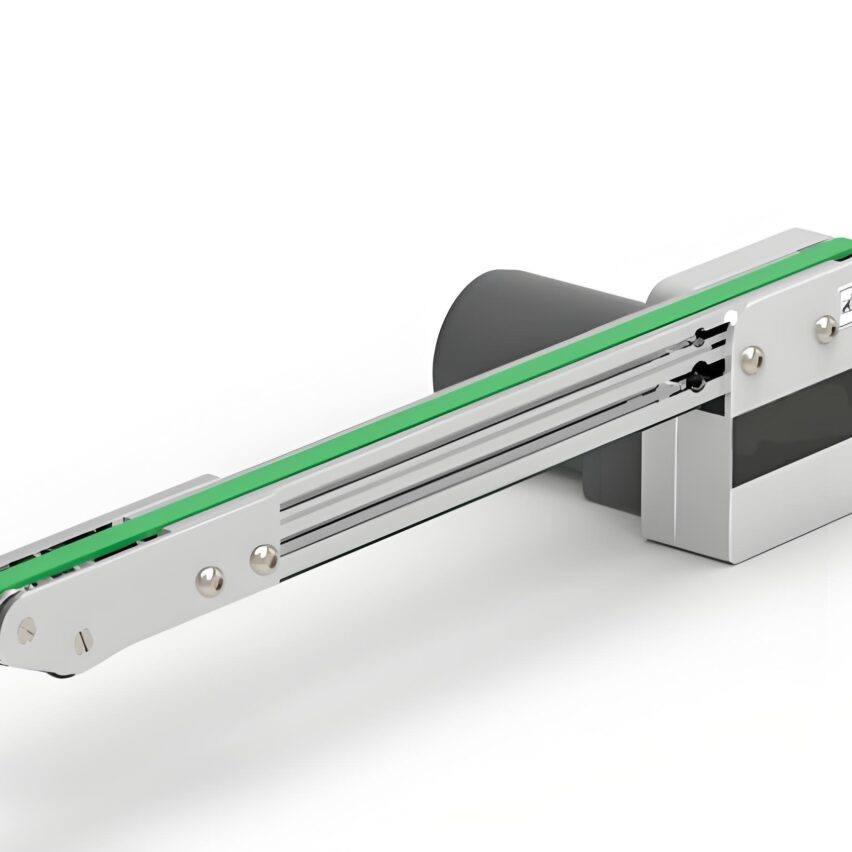Brothers, did you just take over the production line design head big? Are you confused when you look at a bunch of parameters? Do not panic! Today, let's talk about how to design a reliable belt assembly line in human language - to put it bluntly, it isYou need to save money and be able to fight, after reading this little white guy can become an insider!

First, first understand: your material is what temperament?
Selection of the first step is not to look at the equipment, but to find out what your "goods" character!
- particle sizeSmall particles (such as grain, sand and gravel) are recommended to use high-speed belts (2-4m/s), while large materials have to be slowed down to prevent splashing.
- Wet or not, sticky or notWhat's the best way to do this? Sticky materials (e.g. chemical raw materials) have to be selected with anti-stick belts + additional scraper cleaner.
- Weight and shapeHeavy goods (such as car parts) have to be thicker belts (≥6mm), light and small parts (such as electronic components) with thin models (1-3mm) more energy-saving!
Case overturning scene: A factory used ordinary belt to transport ore, and the result was that it wore out in half a year! Later, it was replaced by steel rope core belt + buffer rollers, and the life span was directly doubled.
Second, three parameters determine life and death: speed, width, layout
1. How do I adjust the speed so that I don't roll over?
| take | Recommended speed | Adjustment method |
|---|---|---|
| Assembly of small parts in electronic factories | 1.5-3m/min | Frequency converter stepless speed regulation |
| Grain Terminal Bulk Material Conveying | 2-4m/s | Hydraulic motor variable speed |
| Heavy duty parts for automotive plants | 0.5-1m/s | Gearmotors |
| crux: Faster is not better!Exceeding the critical speed of the material will cause it to fly off., refer to the webpage [3] for the formula.Safe speed ≤ √ (material density × gravitational acceleration) |
2. Wrong choice of width all white!
Take a chestnut 🌰:
- Shipping 20mm screws?300mm wide belt is enough
- Shipping 1 metre of steel plate?At least 800mm wideWe'll have to add a baffle to prevent it from falling off.
lazy formula: Bandwidth = Maximum material size x 1.5 + 100mm (safety margin)
3. Money-saving tips on layout
- Don't be stingy with the turning radiusThe radius of a 90° turn is ≥ 8 times the bandwidth (e.g. R4000mm for a 500mm bandwidth), otherwise the edge of the belt wears out quickly.
- Don't climb more than 15°.! Slope > 12° must be added non-slip belt
- Space saver: Use ofZ-stacked layoutThe upper and lower lines share the same bracket, the height of the plant saves 30%.
Third, how do you build a core component? Remember these 5 rules
Question and answer time
Q: What should I do if the belt runs out of alignment?
A: Three steps to save your life -
①Adjustment of rollers: Calibration with laser level, height difference ≤1mm
②Installation of deflection wheels: Pneumatic automatic deflector response speed <0.5 sec.
(iii)adaptor: Vulcanised joints have lower eccentricity than mechanical joints 80%
Q: What should I do if the motor keeps burning?
A.Tension was miscalculated!Remember the golden formula.Tension = belt length x 0.5%(50kg force is needed for 10m line). Add another wireless tension sensor and mobile phone APP alarm doesn't smell good?
List of mandatory parts::
- driving wheel: Measure the thickness of the rubber layer every week (replace it immediately if it is less than 3mm).
- rolls: listen for noise twice a month (lubricate if it jams)
- sweeper: Scrape the residual material before the end of each day (the sticky material is more than 5mm, hurry to clear it).
Fourth, anti-blocking and anti-collapse practical skills
New to the industry brother most afraid of plugging downtime? Try these tricks:
- Anti-blocking three-piece set::
- Vibrators (anti-clumping of materials)
- Ramp guides (anti-stacking)
- Infrared blockage sensor (automatic shutdown for offsets >5mm)
- Tear prevention is a must::
- fringe plusAnti-tear wire rope
- headerladdered lap(Higher strength than direct bond 60%)
- Money Saving Maintenance Method::
A food factory lays underneath the beltTeflon coated palletsThe coefficient of friction was reduced by 70%, saving $120,000 in annual electricity costs!
V. Case review: car factory to save millions of tawdry operation
The belt line was designed for a new energy plant last year and their original proposal was:

- Linear layout covers an area of 500m2
- Normal motor + mechanical tensioning
- Manual fault patrol
Let's optimise it:
✅Change to a U-shaped loop layout→ Provincial 40%
✅Hydraulic tensioning + inverter motor→ Energy consumption down 35%
✅Retrofitting of vibration sensors→ 3 hours advance warning of failures
And what happened? First year of productionSaved $800,000 on repairsDowntime has dried up from an average of 8 hours per month to less than 1 hour!
And finally, a little bit of truth.
Designing a beltline is like fitting a computer -Don't just look at how good the CPU (motor) is, the memory (belt) and cooling (lubrication) have to keep up as well!Three things for newbies to remember:
- Take a sample of material for testing first(Don't believe the manufacturer's promises.)
- Leave 10% power margin(Prevention of production increases during peak seasons)
- Monthly tension calibration(10 times cheaper than repairing it after the fact)
Remember that brothers.Good design is not about piling up parameters, it's about dumbing down the production line - there's no way to tell!(meaning so few faults that there's no chance to complain 😉 )
The data in this article comes from industrial field measurements and public technical white papers, individual parameters may fluctuate due to differences in working conditions.













